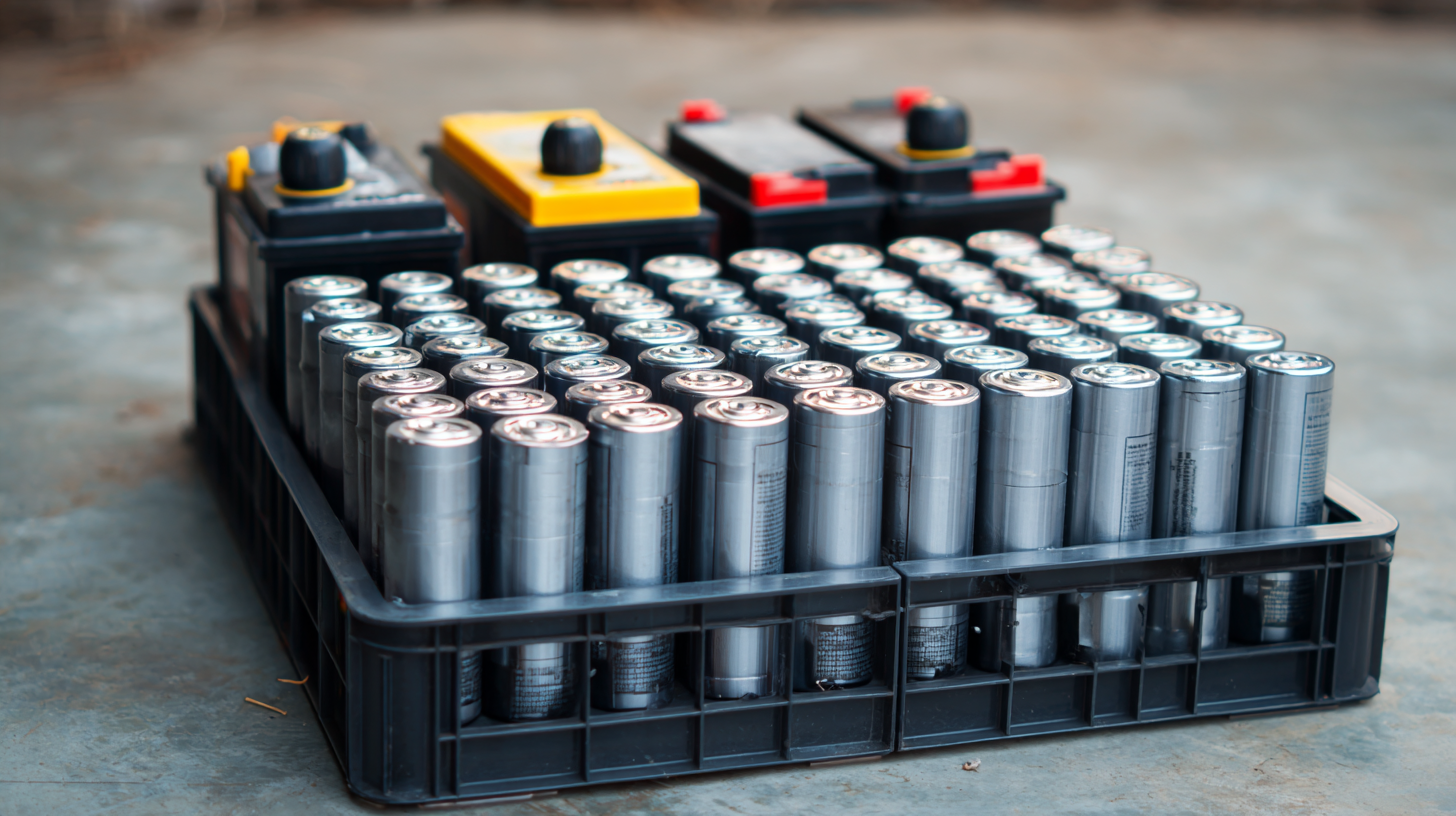As the shift towards renewable energy continues to gain momentum, homeowners are increasingly considering solar energy systems to reduce their carbon footprint and increase energy independence. According to the U.S. Energy Information Administration, residential solar installations have seen a remarkable growth of over 20% each year since 2015, highlighting a rising interest in sustainable energy solutions. A crucial component of these systems is the use of solar batteries for house applications, which store excess energy for use during peak hours or nighttime. A recent report by Bloomberg New Energy Finance projected that energy storage capacity will double by 2024, underscoring the importance of selecting the right solar battery to meet individual energy needs. With an array of options available in the market, understanding how to choose the best solar batteries for your home energy needs is essential for optimizing efficiency and cost-effectiveness in your solar energy system.

Understanding your home energy requirements is a fundamental step in choosing the best solar batteries for your energy needs. Begin by assessing your household's daily energy consumption, which can typically be found on your electricity bill. Take note of the kilowatt-hours (kWh) used each month, as this information will help you identify the capacity required for your solar battery system. Consider both your average daily usage and any peak requirements that might occur, such as during evenings or weekends when energy demand increases.
Next, factor in any future energy needs you may have, such as electric vehicle charging or the addition of new appliances. This foresight will ensure that your battery system isn’t just adequate for your current needs but can also accommodate changes in your lifestyle. Additionally, evaluate your roof's solar capacity if planning to install solar panels, as this will impact the amount of energy that can be stored. With these insights, you can select the right type and size of solar battery, ensuring it efficiently supports your home’s energy needs both now and in the future.
When choosing the best solar batteries for your home energy needs, understanding the various types available is essential. There are several categories of solar batteries, including lead-acid, lithium-ion, and saltwater batteries, each offering unique features and benefits. Lead-acid batteries are often the most affordable option, but they typically have a shorter lifespan and require more maintenance. On the other hand, lithium-ion batteries are known for their high efficiency and longer lifespan, making them a favored choice among homeowners looking for reliability and lower maintenance requirements.
Additionally, emerging technologies are improving the capabilities of solar batteries, leading to innovations that enhance energy management systems. For instance, the latest developments aim to optimize not only the storage of solar energy but also its efficient use in household applications. Features such as fast charging, increased capacity, and smart monitoring systems are becoming more common, helping consumers make informed decisions that align with their energy independence goals. As electricity costs continue to rise, understanding these options becomes crucial for effectively managing energy needs in homes.

When selecting the best solar batteries for your home, several critical factors must be considered to ensure efficiency and longevity. First and foremost, the battery's capacity is crucial. This capacity, measured in kilowatt-hours (kWh), determines how much energy the battery can store and supply. Homeowners should evaluate their energy consumption patterns to choose a battery size that meets their needs without excessive overcapacity.
Another essential factor is the battery type. Lithium-ion batteries offer high efficiency and longer lifespan compared to lead-acid batteries, although they come at a higher initial cost. For those on a budget, lead-acid batteries may still be a viable choice, particularly if short-term storage is all that's needed.
Tips: Before making a purchase, it's wise to consider the warranty offered on the batteries. Longer warranties typically indicate a manufacturer's confidence in their product. Additionally, look for batteries with a high cycle life, as this will reduce the frequency of replacements and lower long-term costs. Finally, check for compatibility with your existing solar panel system to ensure seamless integration.
When selecting solar batteries for your home, two critical factors to consider are battery capacity and lifespan. Battery capacity, measured in amp-hours (Ah) or kilowatt-hours (kWh), determines how much energy a battery can store and supply. It’s essential to match the capacity of the battery with your energy consumption needs. A larger household with substantial energy demands may require batteries with higher capacity to ensure a steady power supply, especially during peak usage times or power outages.

Lifespan is another crucial aspect that directly impacts the long-term value of your investment. Most solar batteries are rated for a certain number of cycles, indicating how many times they can be fully charged and discharged before their performance declines. Lithium-ion batteries, for instance, typically offer a lifespan of 10-15 years, whereas lead-acid batteries may last only 3-5 years. Considering both capacity and lifespan, it’s essential to evaluate how these factors align with your energy requirements and budget. Selecting a battery with optimal capacity and longevity will ensure you maximize both performance and savings from your solar energy system.
When considering the purchase of solar batteries for home energy needs, it is crucial to assess the budget alongside available incentives. Recent developments highlight that federal battery incentives can be combined with state-level schemes, potentially amplifying savings for homeowners. For instance, reports indicate that together, these incentives could reduce initial costs by up to 50%. This substantial saving can make solar battery solutions much more accessible for homeowners eager to maximize their energy independence.
Moreover, states like California offer various incentive programs, including tax credits and rebates, which enhance the cost-effectiveness of solar investments. The current federal tax credit for residential solar installations, which stands at 30%, is another key factor to consider, especially as proposed budget measures aim to accelerate its expiration by the end of 2025. Homeowners should stay informed about such changes, as they could significantly impact the financial feasibility of solar battery installations and overall energy strategies in the coming years.
| Battery Type | Capacity (kWh) | Cycle Life | Warranty (Years) | Estimated Cost ($) | Incentives Available |
|---|---|---|---|---|---|
| Lithium-ion | 10 | 5000 | 10 | 7000 | Federal Tax Credit |
| Lead Acid | 8 | 1500 | 5 | 3000 | State Rebates |
| Flow Batteries | 15 | 10000 | 10 | 12000 | Utility Incentives |
| Nickel-based | 9 | 3500 | 8 | 6500 | Tax Credits |





